1.字符的输入与输出
1.1.getchar与putchar,scanf与printf
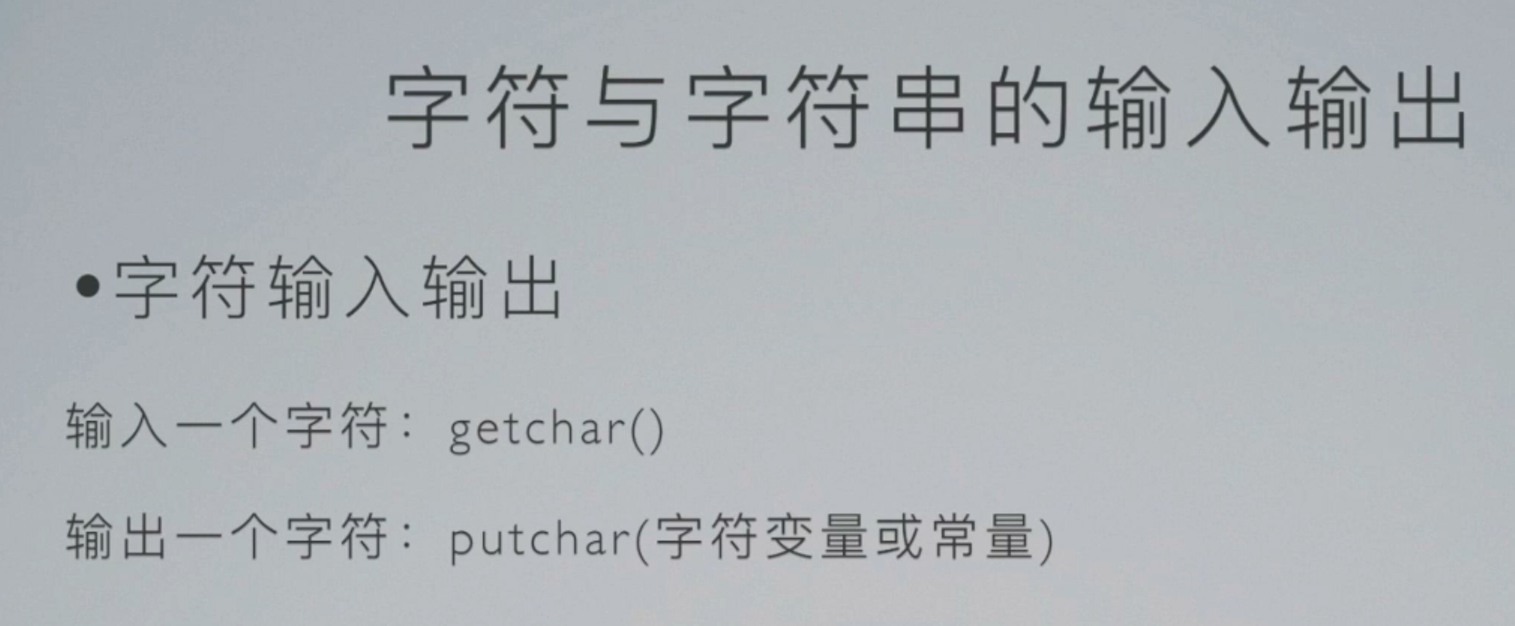

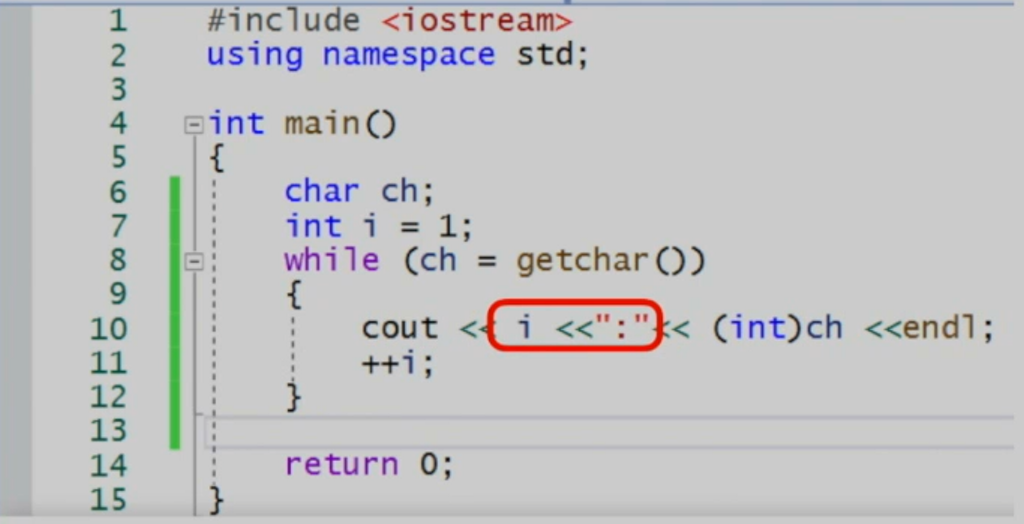
#include<iostream> using namespace std; int main(int argc,const char *argv[]){ char ch; int i = 0; while(ch = getchar()) { cout<< i<<":"<< ch<< endl; i++; } return 0; }
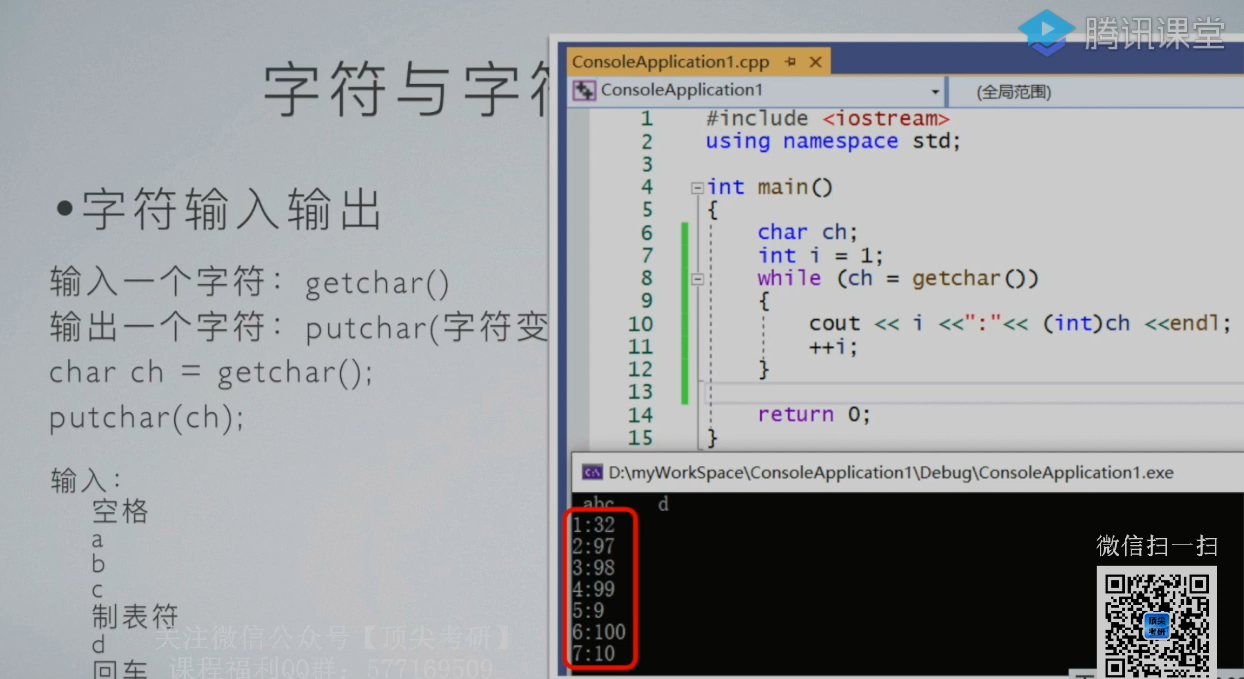
所以说空格,制表符(tab)以及回车都是能够读到的。
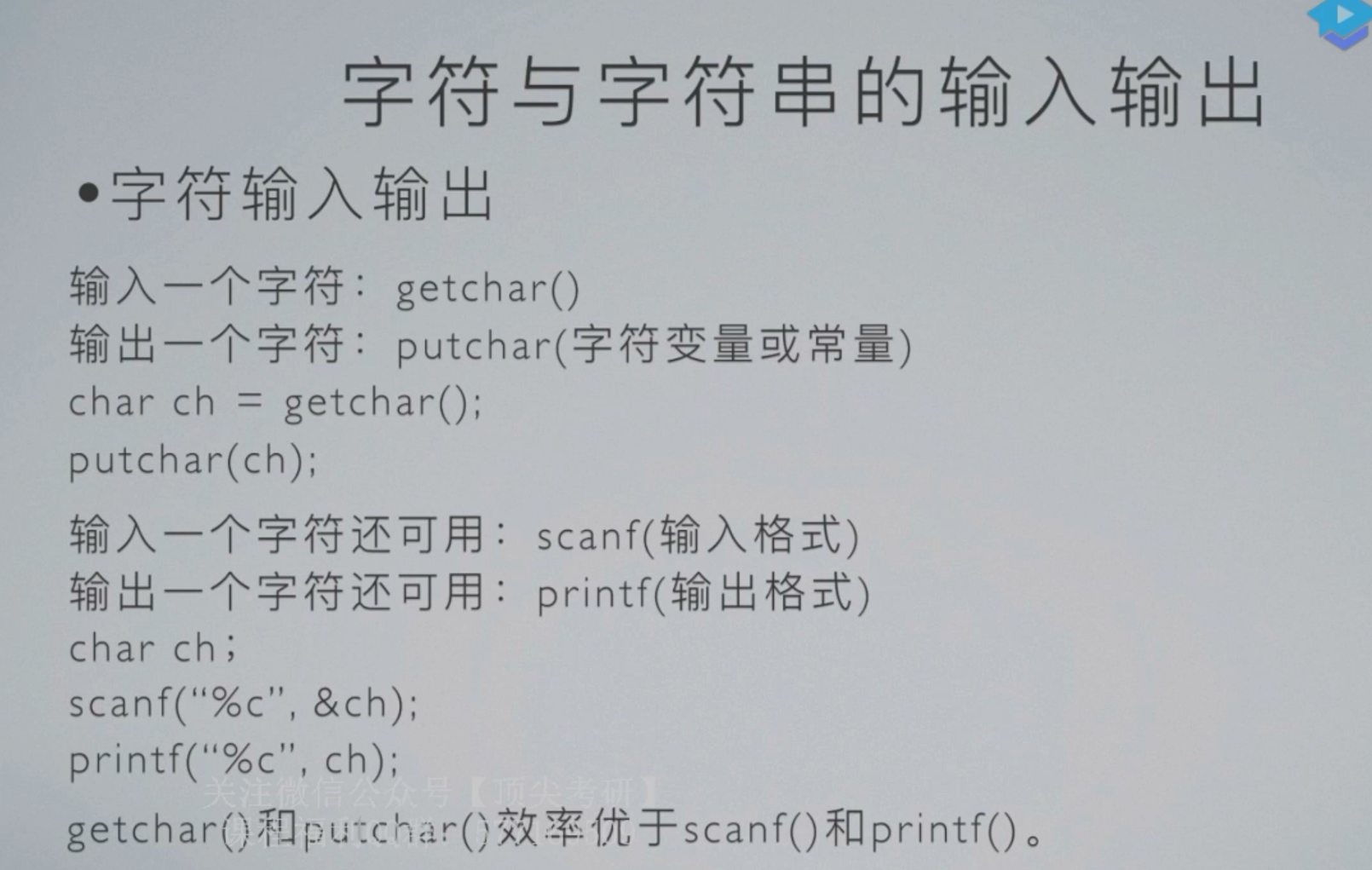
同理把上面换成scanf,printf效果也一样。
scanf,getchar每次取值检查缓冲区里面是否会有值,如果有值的话,便会取走。
1.2注意细节
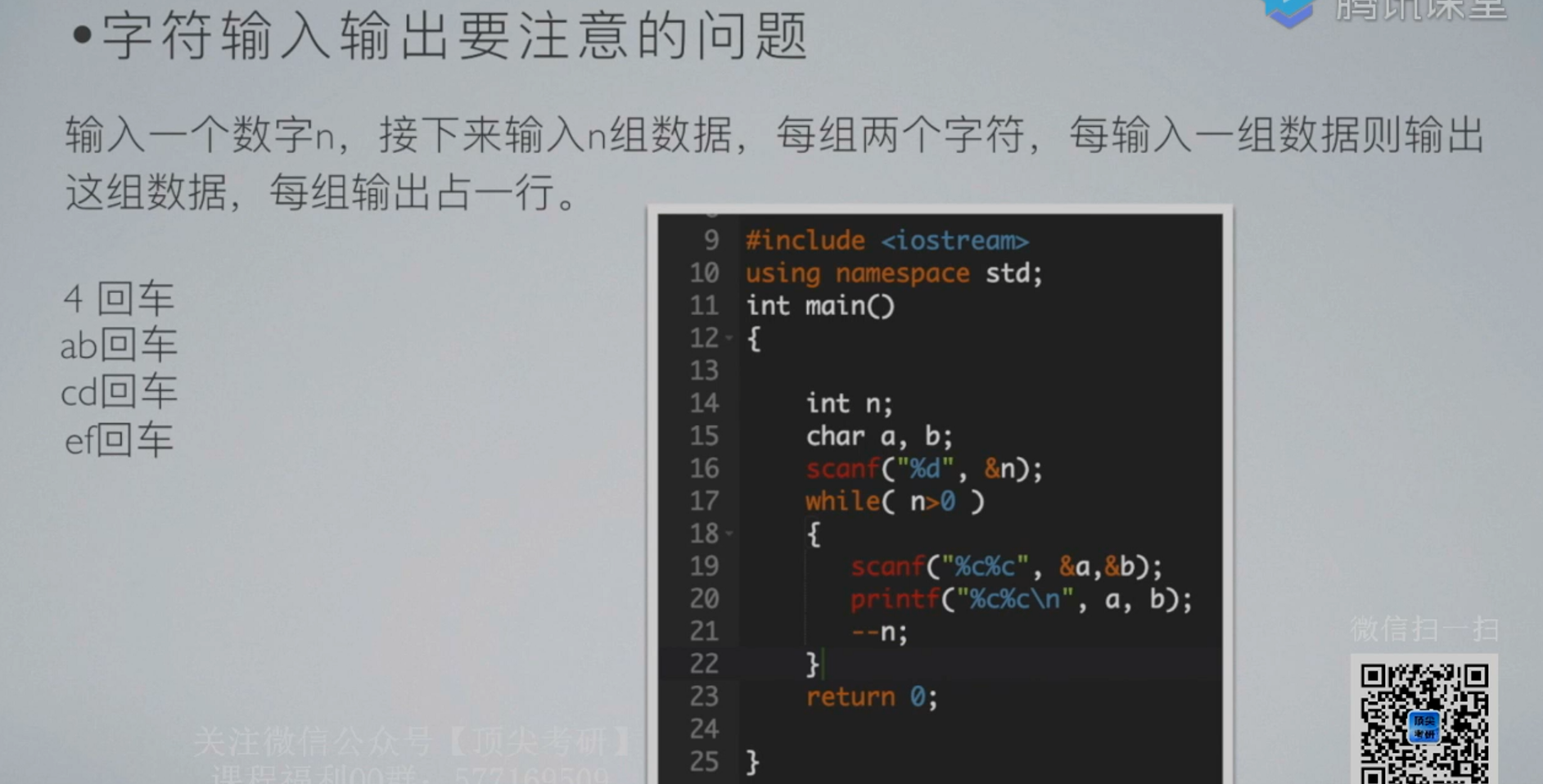
但是这样这行代码输出会与我们预想的不符。


#include<iostream> using namespace std; int main(int argc,const char *argv[]){ char a,b; int count,i; scanf("%d",&count); for(i = 0;i<count;i++) { scanf("%c%c",&a,&b); printf("%c%c ",a,b); } return 0; }
输出的结果为什么和我们预想的不一样,在键盘的缓冲区里面会有制表符,在前面输入数字的时候有个回车还在缓冲区里面。
每次按下回车键的时候,就是程序可以向缓冲区里面取走数字了。
后面输出的时候发现缓冲区还有回车符然后取走,然后等待下一轮的输入,下一轮的输入加上回车缓冲区里面,然后程序取值。然后输出了。
所以我们的解决办法是把回车符给拿走,用getchar函数即可。
详见下面
#include<iostream> using namespace std; int main(int argc,const char *argv[]){ char a,b; int count,i; scanf("%d",&count); getchar(); for(i = 0;i<count;i++) { scanf("%c%c",&a,&b); getchar(); printf("%c%c ",a,b); } return 0; }
2字符串的输入与输出
2.1 getline(cin,s),scaf("%s",&s)
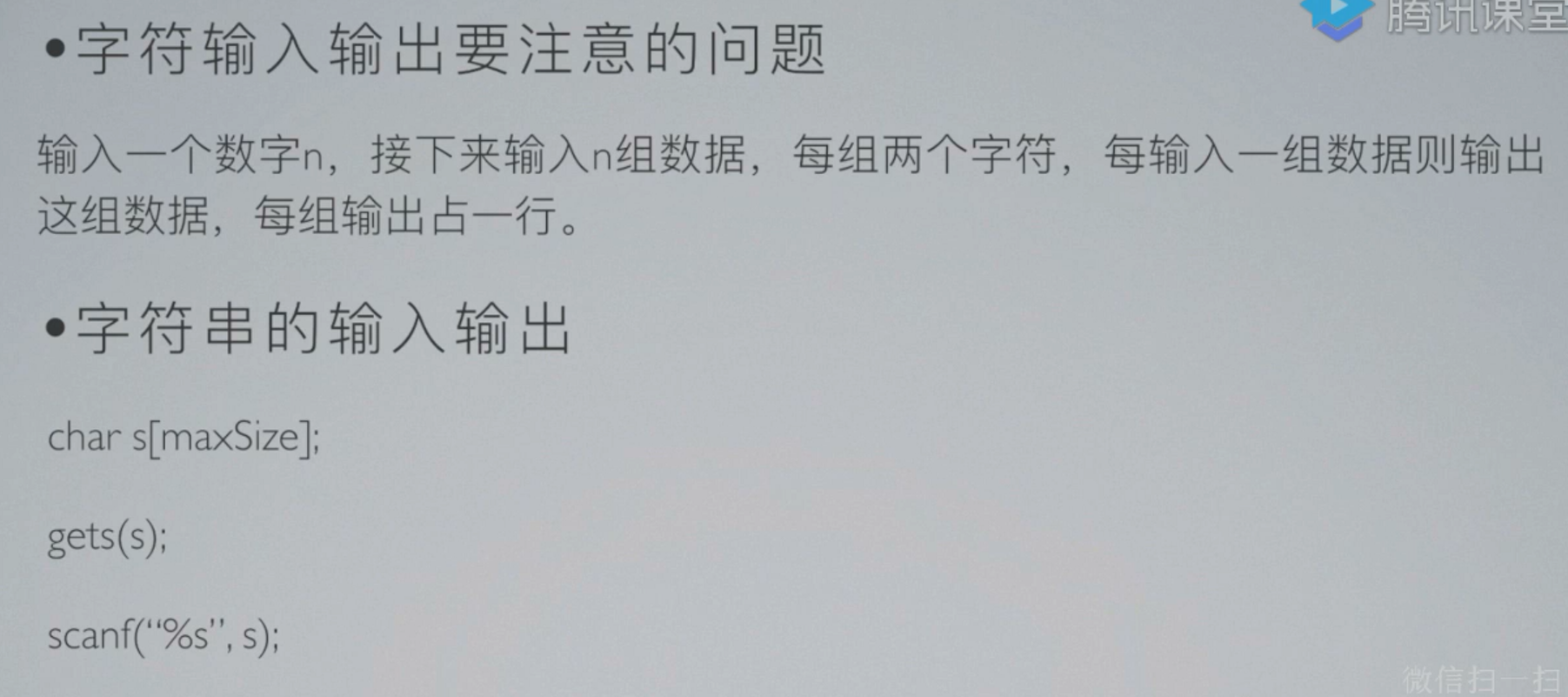
注意上面那个是getline(cin,s),上面写的有点简单。下面都是gets()代替
#include<iostream> using namespace std; int main(int argc,const char *argv[]){ char s1[10]; string s2; getline(cin,s2); scanf("%s",s1); cout<<"s1:"<<s1<<endl; cout<<"s2:"<<s2<<endl; return 0; }
末尾自动会补上�

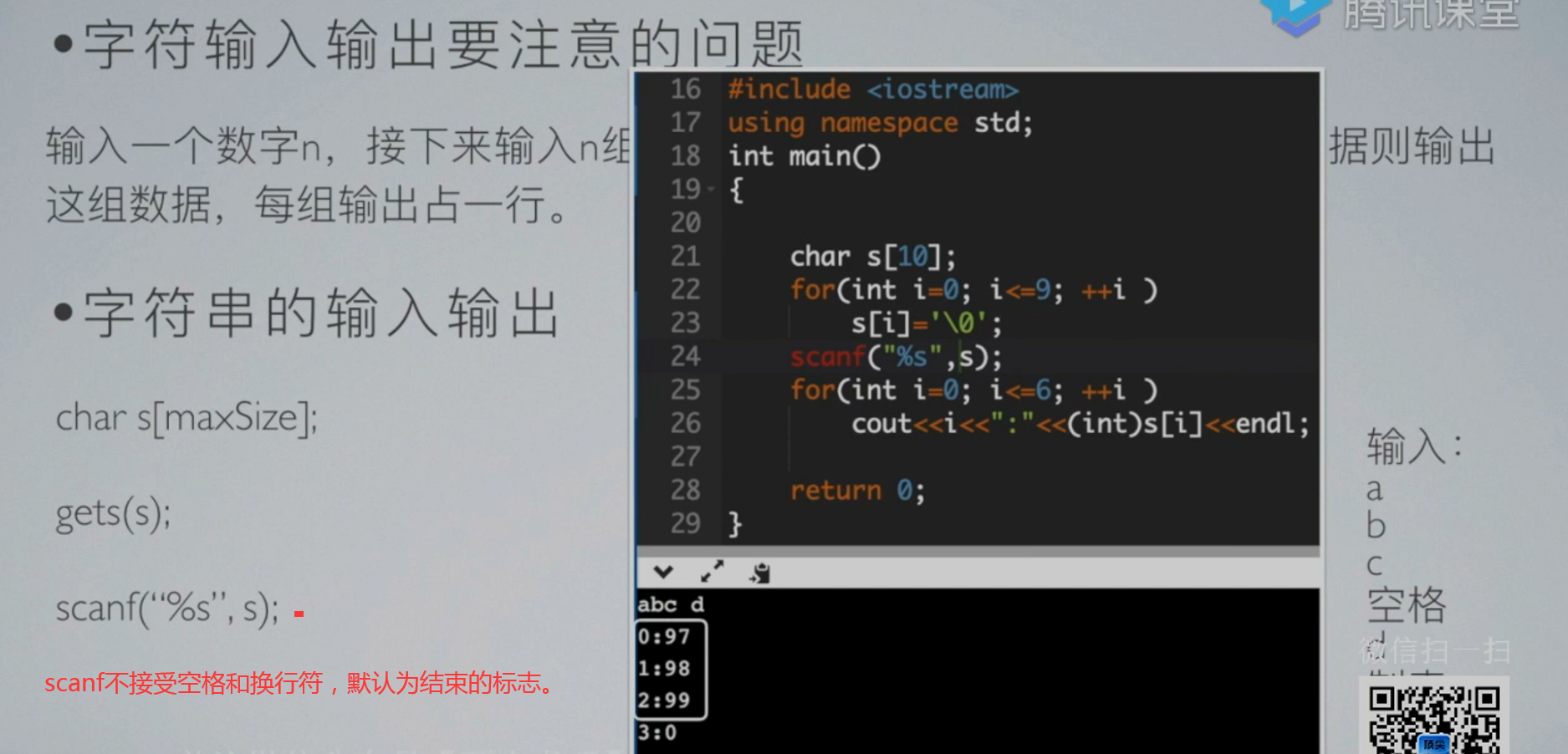

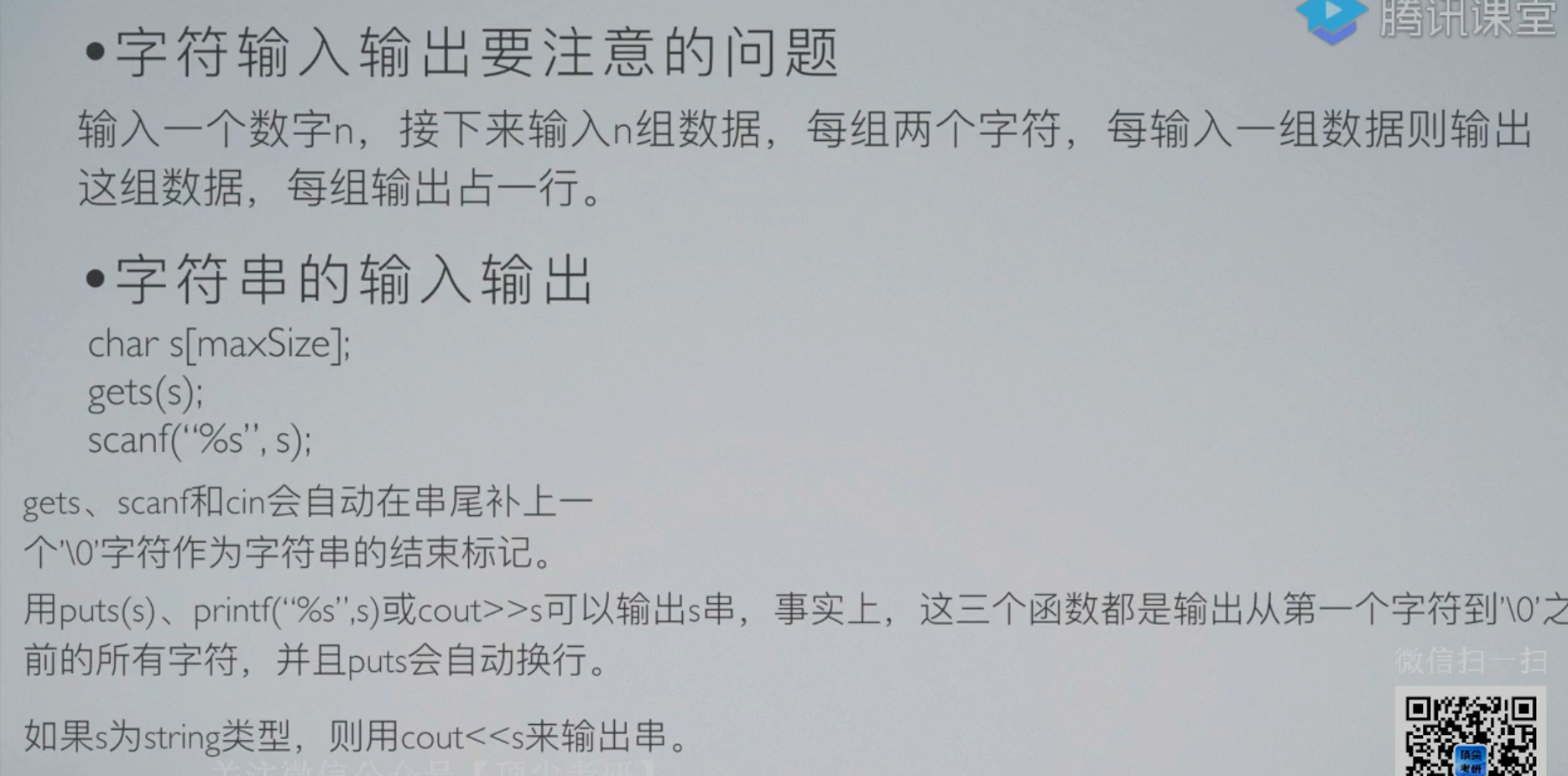
返回目录。
